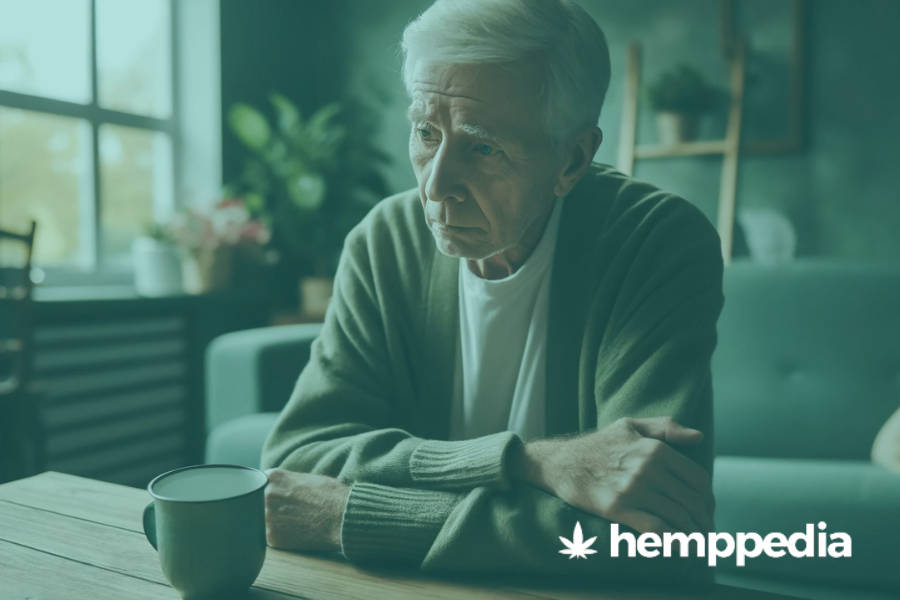CBD Suppositories are pills made for inserting medications through the rectum or vagina. This route of administration of CBD is used in certain conditions and benefits people in therapeutic use.
Suppositories are suitable for people undergoing chronic conditions. Do they provide enhanced bioavailability of the drug?
Therefore, this article aims to compile some useful information on suppositories. So that different sections of CBD users can benefit from gaining the right information. Avoiding misuse of any drug is individual responsibility for personal and societal safety.
What are suppositories?
A 2016 study1 on rectal drug administration describes suppositories as small, torpedo-shaped pellets that get melted when inserted into the body.
For example:
- Glycerin suppositories used in treating constipation,
- Paracetamol or acetaminophen to treat pain and fever.
At this point, it is worth mentioning that suppositories are different from Enema. Enema is commonly used as a laxative to relieve constipation or to clean the bowel for a medical examination/ surgery. They contain fluids and get injected into the anal cavity.
On the other hand, a suppository is a solid-medication inserted in the rectum that gets completely absorbed.
Cannabis Suppositories
Cannabis suppositories contain cannabis-infused oils in a carrier oil. Cocoa butter, or gelatin, surrounds the medication. Once inserted into the rectum, they get melted due to body temperature. And the medicine gets absorbed by the body.
Moreover, rectal routes of administration of both THC and CBD have been in use for decades, but they are not very popular. Continue reading to know why?
Uses
- A 2010 study2 reports that suppositories are useful for patients who cannot take drugs orally due to nausea, vomiting, advanced disease or neurological deficit.
- According to the available anecdotal accounts, patients report a lack of intoxication in suppositories compared to smoking THC rich cannabis.
- The results of a 2005 study3 reveal that the epithelium cells in the colon are biochemically and functionally responsive to cannabinoids. Also, epithelial CB1 receptors have an immunomodulatory role that may impact mucosal immunity.
- People suffering from chronic progressive illness require high levels of THC. Oral consumption could leave the patient psychoactive as most of the medicinal content gets processed in the liver. On the other hand, rectal administration gives maximum absorption of THC.
Different types of suppositories
There are three types of suppositories. They are rectal, vaginal, and urethral suppositories (alprostadil suppository). And each of these is useful for treating specific symptoms.
The below table summarizes their applicability in treating some symptoms.
| Rectal | Vaginal | Urethral |
| Constipation | Bacterial/ fungal infections | Erectile dysfunctions |
| Hemorrhoids | Endometriosis pain | Male sexual functional problems |
| Nausea | Vaginal dryness | |
| Seizures | ||
| Schizophrenia, bipolar disorder |
Who can use suppositories?
What does Research say?
The pelvic region (reproductive organs, urinary bladder, pelvic colon, and the rectum) accommodates a framework of nerves that channel to the legs and the spine. And the Colonic tissues house CB1 and CB2 receptors that could mediate the effects of THC.
Therefore rectal routes of administration of cannabis oil might activate the cannabinoid receptors, which could be supportive for treating local conditions such as hemorrhoids or inflammation.
Let us briefly review a few studies from 1985- 2019, their inferences about the effects of the rectal route of cannabinoid administration.
- The 1985 in-vivo (animal model) study4 concluded that THC was not bioavailable by the rectal route.
- Similar to the above inference, the 1991 study5 reports that while oral administration of Δ9 THC resulted in erratic and low bioavailability, it showed no bioavailability from suppository formulations. Hence this study proved that with the help of a pro-drug called THC-hemisuccinate( THC-HS) suppository was 70-80% bio-available.
- In a 1996 pilot study6 the bioavailability derived from oral administration was 45-53% relative to the rectal route of administration. This is because of the higher first-pass effect and low absorption. Also in terms of effectiveness between oral and rectal formulation was 25-50%.
- The 1999 study7 considers suppositories as effective formulations for systematic delivery and sustained plasma levels of THC. This is because of the erratic absorption and variable first-pass effect of THC in oral administrations.
- Contrary to the above observations, a 2019 review study8 states that rectal administration is a less common route of drug administration for therapeutic purposes and the bioavailability is very discrepant, depending on the composition of the suppository.
Advances in research
The field of drug delivery is witnessing constant research and development. It is opening up new avenues to innovate and uncover hidden potential.
A 2017 study9 highlights the advancements and novel approaches in rectal drug delivery for systemic circulation.
For example:
Novel drug delivery systems include hollow-type suppositories, thermo-responsive, mucoadhesive liquid suppositories, and nanoparticulate systems. These novel approaches proved to render improved control over drug delivery for local and systemic actions.
Conclusion
- From tea to tampons, cannabis is everywhere. Markets are flooded with Cannabis products. In this context, individual responsibility to understand the advantages, inconsistencies, and safety aspects of rectal drug administration is imperative.
- It is noteworthy to mention from a 2003 study10 that the pharmacokinetics of THC vary as a function of its route of administration. This leaves us to inquire, why most studies focus on bioavailability and drug delivery of THC only? Insight about other cannabinoids and their effectiveness in the rectal route, especially in therapeutic use is limited.
- Recent advancements in novel rectal drug delivery systems show promising potential to deliver directly into the systemic circulation. These developments could unleash new opportunities in the therapeutic application of cannabis suppositories.
References
- Lowry M (2016) Rectal drug administration in adults: how, when, why. Nursing Times; 112:8, 12-14. [↩]
- Loyd V. Allen (Professor and Chair) (1997) Suppositories as Drug Delivery Systems, Journal of Pharmaceutical Care in Pain & Symptom Control, 5:2, 17-26, DOI: 10.1300/J088v05n02_03 [↩]
- Wright K, Rooney N, Feeney M, et al. Differential expression of cannabinoid receptors in the human colon: cannabinoids promote epithelial wound healing. Gastroenterology. 2005;129(2):437-453. doi:10.1016/j.gastro.2005.05.026 [↩]
- Perlin E, Smith CG, Nichols AI, et al. Disposition and bioavailability of various formulations of tetrahydrocannabinol in the rhesus monkey. J Pharm Sci. 1985;74(2):171-174. doi:10.1002/jps.2600740213 [↩]
- ElSohly MA, Stanford DF, Harland EC, et al. Rectal bioavailability of delta-9-tetrahydrocannabinol from the hemisuccinate ester in monkeys. J Pharm Sci. 1991;80(10):942-945. doi:10.1002/jps.2600801008 [↩]
- Brenneisen R, Egli A, Elsohly MA, Henn V, Spiess Y. The effect of orally and rectally administered delta 9-tetrahydrocannabinol on spasticity: a pilot study with 2 patients. Int J Clin Pharmacol Ther. 1996;34(10):446-452. [↩]
- Walker L.A., Harland E.C., Best A.M., ElSohly M.A. (1999) Δ9-THC Hemisuccinate in Suppository Form as an Alternative to Oral and Smoked THC. In: Nahas G.G., Sutin K.M., Harvey D., Agurell S., Pace N., Cancro R. (eds) Marihuana and Medicine. Humana Press, Totowa, NJ. https://doi.org/10.1007/978-1-59259-710-9_13 [↩]
- Gonçalves J, Rosado T, Soares S, et al. Cannabis and Its Secondary Metabolites: Their Use as Therapeutic Drugs, Toxicological Aspects, and Analytical Determination. Medicines (Basel). 2019;6(1):31. Published 2019 Feb 23.doi:10.3390/medicines6010031 [↩]
- Trusha J. Purohit, Sara M. Hanning & Zimei Wu (2018) Advances in rectal drug delivery systems, Pharmaceutical Development and Technology, 23:10, 942-952, DOI: 10.1080/10837450.2018.1484766 [↩]
- Grotenhermen F. Pharmacokinetics and pharmacodynamics of cannabinoids. Clin Pharmacokinet. 2003;42(4):327-360. doi:10.2165/00003088-200342040-00003 [↩]



